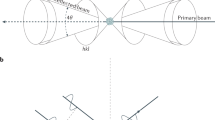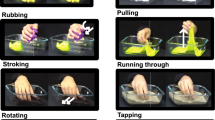Abstract
AMONGST the many properties of solids which are the subject of measurement, none are less satisfactorily specified than that of hardness. Two kinds of hardness may be distinguished, namely, surface hardness and body-hardness, though the distinction is often disregarded. Mineralogists deal with surface hardness, and of any two bodies call that the hardest which will scratch, but not be scratched by the other. On this system an arbitrary scale has been evolved having diamond (Hardness 10) at one end and talc (Hardness 1) at the other.
This is a preview of subscription content, access via your institution
Access options
Subscribe to this journal
Receive 51 print issues and online access
$199.00 per year
only $3.90 per issue
Buy this article
- Purchase on Springer Link
- Instant access to full article PDF
Prices may be subject to local taxes which are calculated during checkout
Similar content being viewed by others
Author information
Authors and Affiliations
Rights and permissions
About this article
Cite this article
MALLOCK, A. Hardness. Nature 117, 117–118 (1926). https://doi.org/10.1038/117117a0
Issue Date:
DOI: https://doi.org/10.1038/117117a0
This article is cited by
-
Dislocations produced in magnesium oxide crystals due to contact pressures developed by softer cones
Journal of Materials Science (1989)
-
Hardness of Rough Surfaces
Nature Physical Science (1971)
Comments
By submitting a comment you agree to abide by our Terms and Community Guidelines. If you find something abusive or that does not comply with our terms or guidelines please flag it as inappropriate.



